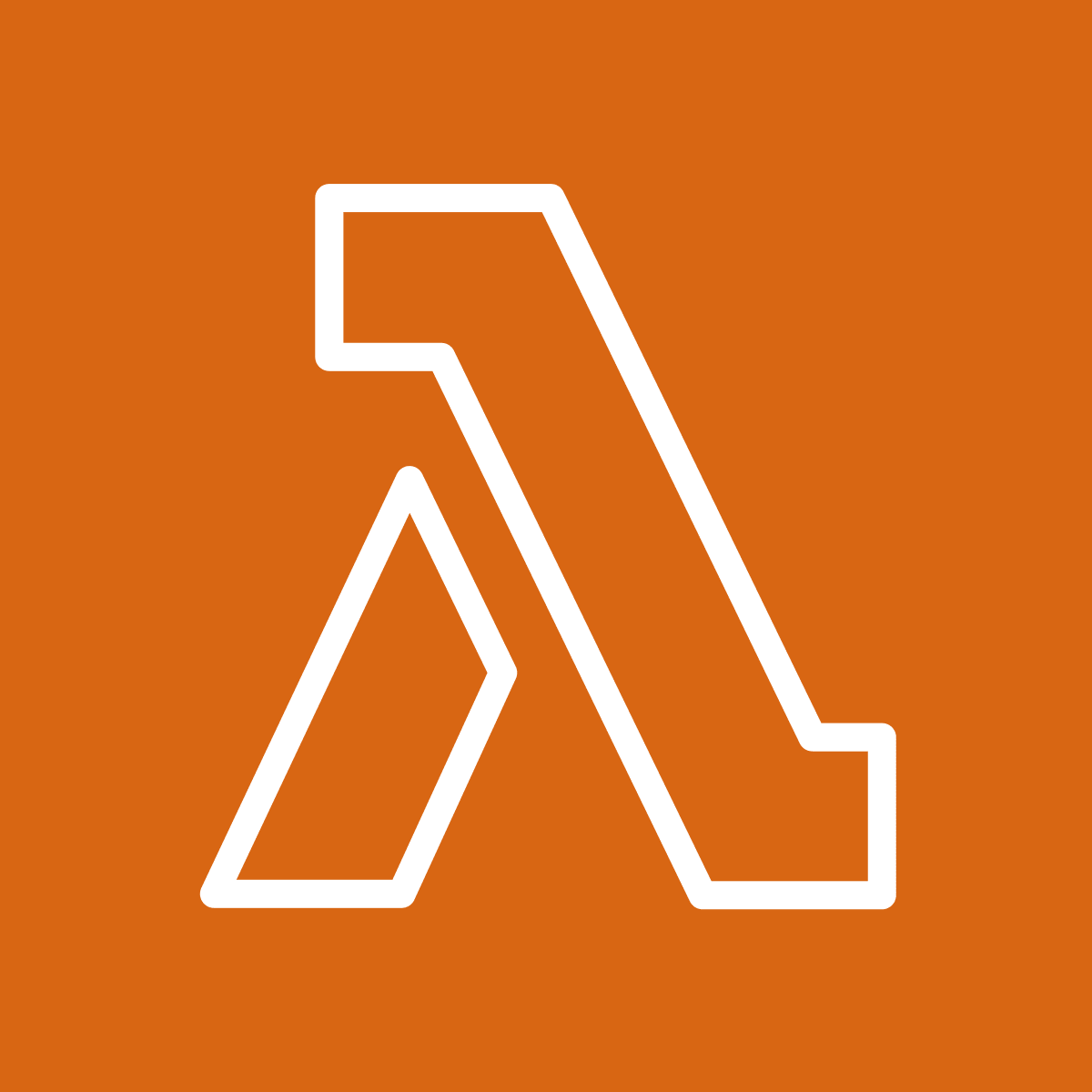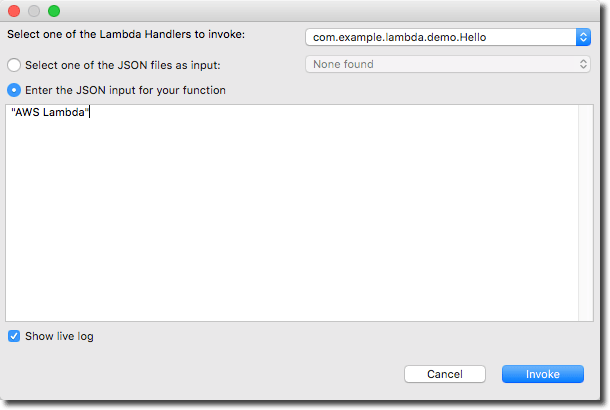How to Upload Multiple Java Classes to One Lambda Function
Companies regularly need to update their applications for smooth functioning and implementation of new features. Developers continuously work on making the applications fast, polish and secure. Modernistic applications use serverless and Cloud technologies For this, information technology is essential to take hands-on versatile programming languages such every bit Coffee.
Java is a high-level programming language widely used in the majority of enterprise applications and backend services for running business organization activities. Using serverless computing services in applications such as AWS Lambda improves applications' performance significantly. AWS Lambda Coffee projects are piece of cake to build and manage.
AWS Lambda Java functions tin be created on Eclipse IDE and run via uploading it to the AWS Lambda. In this article, you volition larn near the steps to create, upload and invoke the AWS Lambda Java functions with an example.
Table of Contents
- Introduction to AWS Lambda
- Key Features of AWS Lambda
- What is Java?
- Key Features of Coffee
- Running AWS Lambda Java Funcion
- Pace 1: Creating an AWS Lambda Project
- Step ii: Implementing the Handler Method
- Pace three: Creating an IAM Office for AWS Lambda Coffee Project
- Step 4: Creating AWS S3 Saucepan
- Step 5: Uploading the AWS Lambda Java Lawmaking
- Step 6: Invoking the AWS Lambda Coffee Function
- Conclusion
Introduction to AWS Lambda

AWS Lambda is the compute service offered by Amazon Web Services that allows y'all to without managing any server. Information technology is an event-driven and serverless computing platform that runs code in response to events. AWS Lambda officially supports Python, Node.js Java, Become, Ruby, and C# language.
AWS Lambda uses a serverless computing service that executes Lambda functions to perform whatsoever calculating task from serving spider web pages and processing data streams.
Key Features of AWS Lambda
Some of the chief features of AWS Lambda are listed below:
- Mistake-tolerance: AWS Lambda helps users protect their code against private machine or data heart facility failures past maintaining compute chapters across multiple Availability Zones.
- Machine-Scaling: AWS Lambda can automatically scale for supporting the rate of incoming requests and invoking the code just when needed.
- Flexible Resource Model: Users can choose the amount of memory they desire to allocate to functions and it volition CPU power, network bandwidth, and disk input/output (I/O) proportionally.
- Automated Assistants: AWS Lambda is capable of managing all the infrastructure for you to run your code and help y'all focus more on building backend services.
To learn more about AWS Lambda, click here.
What is Java?

Coffee is a class-based, loftier-level, and object-oriented programming language first released by Sun Microsystems in 1995. Programmers tin can write code in Coffee in one case and run information technology anywhere because Coffee code runs on all platforms that support Coffee without the demand to recompile.
Java is used for building most applications because information technology is scalable and fast. It uses Java Virtual Machine to compile lawmaking to bytecode which makes information technology independent of computer architecture.
Key Features of Coffee
Some of the principal features of using Java are given below:
- Platform Independent: Java compiles into platform-independent byte code instead of a platform-specific machine that allows users to run single lawmaking on whatever platform.
- Multithreaded: Java is capable of executing multiple tasks simultaneously which makes it easier for Developers to build an application to run smoothly.
- Piece of cake to Use: Java is a unproblematic and easy-to-learn programming language that follows OOPs concepts and logic.
To learn more about Java, click here.
Hevo Information, a No-code Data Pipeline helps to load data from any data source such equally Databases, SaaS applications, Cloud Storage, SDK,s, and Streaming Services and simplifies the ETL procedure. It supports 100+ data sources (including xxx+ free data sources) and is a 3-footstep process by merely selecting the data source, providing valid credentials, and choosing the destination. Hevo not merely loads the data onto the desired Data Warehouse/destination merely also enriches the data and transforms information technology into an analysis-ready class without having to write a unmarried line of code.
Get Started with Hevo for Gratuitous
Its completely automated pipeline offers data to be delivered in real-time without any loss from source to destination. Its fault-tolerant and scalable architecture ensure that the data is handled in a secure, consistent style with zero data loss and supports different forms of data. The solutions provided are consistent and piece of work with unlike BI tools as well.
Cheque out why Hevo is the All-time:
- Secure: Hevo has a fault-tolerant architecture that ensures that the data is handled in a secure, consistent manner with cypher data loss.
- Schema Management: Hevo takes abroad the tedious task of schema management & automatically detects the schema of incoming data and maps it to the destination schema.
- Minimal Learning: Hevo, with its simple and interactive UI, is extremely simple for new customers to work on and perform operations.
- Hevo Is Congenital To Calibration: Every bit the number of sources and the volume of your information grows, Hevo scales horizontally, handling millions of records per minute with very little latency.
- Incremental Data Load: Hevo allows the transfer of data that has been modified in real-fourth dimension. This ensures efficient utilization of bandwidth on both ends.
- Alive Support: The Hevo squad is bachelor round the clock to extend infrequent support to its customers through chat, Email, and back up calls.
- Alive Monitoring: Hevo allows yous to monitor the data menses and bank check where your data is at a item point in time.
Sign up here for a 14-Twenty-four hours Free Trial!
Running AWS Lambda Java Funcion
Now that you lot have understood the AWS Lambda and Java language. In this section, y'all volition learn about the procedure and steps to create, upload and invoke an AWS Lambda Java function. For creating AWS Lambda Coffee functions you need to have an AWS account and AWS Toolkit for Eclipse installed. The following steps for working with the AWS Lambda Java role are listed below:
- Step ane: Creating an AWS Lambda Project
- Pace 2: Implementing the Handler Method
- Step 3: Creating an IAM Role for AWS Lambda Coffee Project
- Step 4: Creating AWS S3 Bucket
- Step 5: Uploading the AWS Lambda Java Code
- Step vi: Invoking the AWS Lambda Java Function
Step i: Creating an AWS Lambda Project
- First, you need to implement the code every bit a method in a handler grade.
- Open up Eclipse and from the toolbar, open up the Amazon Web Services menu (homepage icon).
- Click on the "New AWS Lambda Java project" choice.
- Or you can also go to the Eclipse carte bar and there choose "AWS Lambda Coffee Project" from the "File Bill of fare".
- Now, you have to provide the Projection proper noun, Group ID, Artifact ID, and class name for the AWS Lambda Coffee part project, as shown in the epitome below.

- For this tutorial, the following details are used listed below.
- Projection name: HelloLambda
- Group ID: com.instance.lambda
- Antiquity ID: demo
- In the "Package Name" field, you need to provide the AWS Lambda handler class. Past default, it automatically fills with the concatenation of Group ID and Artifact ID.
- In the "Input Type" drop-down menu, choose the "Custom" pick.
- And so, click on the "Finish" push.
- The source code and the project's directory will automatically exist generated in the Eclipse Workspace.
- A new browser window will open up with "README.html" providing the instructions to guide how to implement, test, upload and invoke the AWS Lambda Java part.
Pace 2: Implementing the Handler Method
- Now, let'due south implement the AWS Lambda Coffee function in the "HelloLambda" project created.
- In the "Projection Explorer" of Eclipse, open up the "Hullo.coffee" file.
- It has the similar code given below.
package com.example.lambda.demo; import com.amazonaws.services.lambda.runtime.Context; import com.amazonaws.services.lambda.runtime.RequestHandler; public class How-do-you-do implements RequestHandler<Object, Cord> { @Override public String handleRequest(Object input, Context context) { context.getLogger().log("Input: " + input); // TODO: implement your handler return "Hello from Lambda"; } } - Now, replace the contents of the "handleRequest" function with the code given beneath.
@Override public String handleRequest(String input, Context context) { context.getLogger().log("Input: " + input); Cord output = "Hello, " + input + "!"; render output; } Pace 3: Creating an IAM Part for AWS Lambda Coffee Project
- Sign in to your AWS Management Console here.
- Now, open the "IAM Console" from the "Services" menu.
- From the navigation panel, cull the "Roles" option and select the "Create role" selection.
- At present, in the "Select type of trusted entity" drop-down carte du jour, choose the "AWS service" pick.
- And then, choose the "Lambda" option for the service that will use this office.
- Click on the "Next: Permissions" choice.
- From the "Attach permissions policy" drib-down menu, choose the "AWSLambdaBasicExecutionRole" option.
- Then, click on the "Next: Review" button.
- At present, add a name for the role similar for this AWS Lambda Java project, the name is "hullo-lambda-role" and draw the role.
- Next, click on the "Create role" button to create an IAM role for the AWS Lambda Java projection.
Stride iv: Creating AWS S3 Saucepan
- To store your AWS Lambda Java project, you demand AWS S3 Bucket for uploading.
- If you already accept an AWS S3 saucepan and then you can utilize that or create a new one, especially for the AWS Lambda Coffee function.
- Get to AWS Management Console and there open up the "S3 Console" from the "Services" menu.
- Click on the "Create saucepan" option.
- Now, provide the valid details to create an S3 bucket for your AWS Lambda Java project such every bit saucepan name, region, etc.
- Click on the "Create" button to create an AWS S3 Bucket.
Stride v: Uploading the AWS Lambda Java Code
- Now, right-click on the Eclipse Window and then choose the "AWS Lambda" option. There select the "Upload part to AWS Lambda".
- Navigate to the "Select Target Lambda Role" folio and select the region to employ. Note that this location should be the same equally the location of the AWS S3 Bucket, as shown in the prototype below.

- Choose the "Create a new Lambda function" option and provide a proper noun for your part such as HelloFunction.
- Click on the "Next" option.
- Describe your target AWS Lambda Java function on the "Office Configuration" page, as shown in the image below.

- Then, choose the IAM role and AWS S3 Bucket for your AWS Lambda Java function.
- Click on the "Role Role" option and select the "Create" option for creating a new IAM role for your AWS Lambda Java function.
- Provide the "Office Proper noun" of your choice, as shown in the image beneath.
- In the "S3 Bucket for Function Code" provide the Bucket Proper noun, as shown in the epitome below.

- Here, you tin can likewise cull to encrypt the uploaded code. In this AWS Lambda Java project, you tin cull the "None" option.
- Click on the "End" push button to upload your AWS Lambda Java part.
- If the upload of AWS Lambda Java code is successful then, you will see the AWS Lambda Java function name next to your Java handler class in the "Project Explorer" view, as shown in the image below.

Step vi: Invoking the AWS Lambda Coffee Office
- Now, right-click on the Eclipse lawmaking window, here become to the "AWS Lambda" option then select the "Run Office on AWS Lambda" choice.
- And so, you lot volition be asked to choose the handler course that you want to invoke.
- Here, now provide a valid JSON String such as "AWS Lambda" in the input field, every bit shown in the image beneath.

- Click on the "Invoke" push button to send your input information to the AWS Lambda Java role.
- Afterward following the procedure correctly, you can see the return value or the response of your AWS Lambda Java part in the "Panel" view of the Eclipse, as shown in the image below.

That's it! You have successfully created, uploaded, and invoked your AWS Lambda Coffee role.
Conclusion
In this commodity, you lot learnt about AWS Lambda and went through the steps to how to create, upload and invoke AWS Lambda Java functions. You used AWS S3 Bucket for uploading the AWS Lambda Java code from Ecplise and managed IAM roles for your AWS Lambda Java project. AWS Lambda helps Developers automatically manage the calculating resources required by the code. AWS S3 Bucket is widely used as a storage space for information needed by applications and backend services.
Visit our Website to Explore Hevo
Companies demand to analyze their business organization information stored in multiple information sources. Information needs to be loaded from data sources such equally AWS S3 Saucepan to the Data Warehouse to get a holistic view of the data. Hevo Data is a No-code Data Pipeline solution that helps to transfer data from 100+ information sources to desired Data Warehouse. It fully automates the process of transforming and transferring information to a destination without writing a unmarried line of code.
Want to take Hevo for a spin? Sign Up hither for a 14-day costless trial and experience the characteristic-rich Hevo.
Share your experience of learning virtually running AWS Lambda Coffee Functions in the comments section below!
No-code Information Pipeline For your Data Warehouse
Continue Reading

Become a Correspondent
You lot can contribute any number of in-depth posts on all things data.
Write for Hevo
Source: https://hevodata.com/learn/aws-lambda-java/

0 Response to "How to Upload Multiple Java Classes to One Lambda Function"
Post a Comment